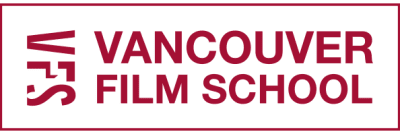
VR/AR Design & Development
Vancouver Film School

Key Information
Campus location
Vancouver, Canada
Languages
English
Study format
On-Campus
Duration
8 months
Pace
Request info
Tuition fees
Request info
Application deadline
Request info
Earliest start date
Jan 2025
Introduction
VR/AR Design & Development
Create immersive experiences and build the tools of tomorrow for the industry of your choice.
In 8 months, you will graduate with:
- A diploma in VR/AR Design & Development
- A portfolio showcasing your work
- Access to the VFS Alumni Directory & Job Board
- Industry connections that will help guide your career
Gallery
Admission requirements
Requirements
A portfolio of your digital and visual work
Students must submit the following:
- 2-3 samples of 3D animation or modeling AND at least 1 example of source code, along with a one-page document that describes the code.
OR, certificates of completion for the following:
- Unity Essentials Pathway AND the project called “Creator Kit: Beginner Coding” (both available for free here).
Or
Successful completion of the VFS Foundation Visual Art & Design and/or 3D Animation & Visual Effects, Game Design, and Digital Design programs
Speak to an Admissions Advisor for more information if you’re completing or have already completed a VFS program.
For more information about admission requirements, please visit the institute's website.
Program content
Term 1 Courses
- Trends in VR AR Development
- Human Centered Design
- Asset Creation for VR/AR
- Object-Oriented Programming
- Unity 1
- Unreal 1
- Production Team
Term 2 Courses
- Understanding VR/AR
- User Experience and Interface Design
- Unity 2
- Unreal 2
- Data Visualization
- VR/AR Client Project
- Final Project
- Final Project Polish and Presentation Lab
Scholarships & funding
Several scholarship options are available. Please check the institute website for more information.
Tuition
- Canadian students: C$22,000
- International students: C$33,250
Qualification
- Explore trends in VR/AR development, and build foundational knowledge of programming, data structures, and algorithms. Learn to create 2D and 3D assets using Adobe Creative Suite and Maya. Begin working with Unity and Unreal to develop VR/AR applications and experiences. Begin production process — research, planning, and building a project.
- Focus on user experience and interface design, from research and concept to wireframe and prototype. Understand VR/AR market trends and industrial applications, and work on a client-based project. Dive deeper into understanding Unity and Unreal within VR/AR development. Work on individual or team-based final project developing a VR or AR application.
Career paths
VR/AR/XR Developers, Unity Developer, Unreal Developer, XR Generalist, Creative Technologist, UX/UI Designer, Immersive Experience Designer, Game Developer, Prototyper, Interaction Designer, Technical Artist, Project Manager
Program Language Requirements
The TOEFL iBT® test is accepted by 11,500 universities and higher education institutions in over 160 countries. Book your test today!
Sponsored partner